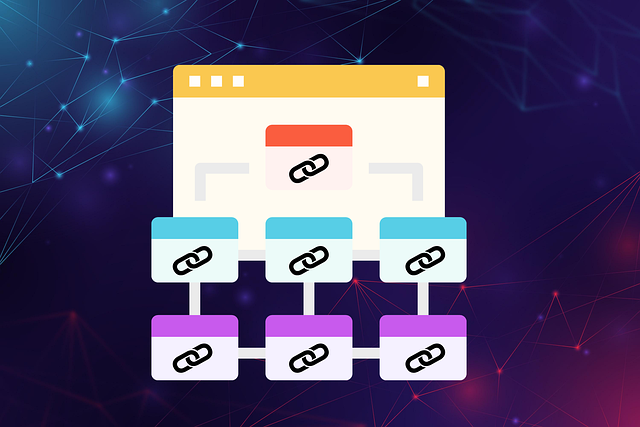Internal linking, powered by SEO internal links plugins, is a beginner-friendly strategy to optimize website performance. These tools simplify creating structured networks of interlinked pages, focusing on relevant anchor text and natural link flow. By improving site navigation, reducing bounce rates, and boosting search rankings, these plugins are crucial for any SEO toolkit. They automate tasks, provide insights, and ensure effective internal linking practices, enhancing user experience and online visibility. Using plugins like Yoast SEO or Rank Math, beginners can easily set up internal links, track key metrics, and optimize content based on engagement data, ultimately driving website success.
“New to the world of SEO? Uncover the power of internal linking with our comprehensive guide. We demystify ‘SEO internal links plugin’ and its role in boosting your site’s visibility. From understanding the basics of internal linking for SEO to advanced strategies, this article is your step-by-step companion. Learn why plugins are vital tools for beginners and how to set up your first internal links effectively. Discover ways to optimize site structure and track performance using these powerful plugins.”
- Understanding Internal Linking: The Basics for SEO
- Why Plugins Are Essential Tools for Beginners
- Unlocking the Power of SEO Internal Links Plugin
- Step-by-Step Guide: Setting Up Your First Internal Links
- Advanced Strategies to Optimize Your Site's Structure
- Measuring Success: Tracking and Analyzing Internal Link Performance
Understanding Internal Linking: The Basics for SEO

Internal linking is a fundamental aspect of Search Engine Optimization (SEO) that connects pages within your website to one another. It’s a strategic process aimed at enhancing user experience and helping search engines understand your site’s content hierarchy. By using an SEO internal links plugin, beginners can easily navigate this concept and improve their website’s visibility. These plugins provide tools to identify relevant pages for linking, ensuring a well-structured and interlinked network of content.
A solid SEO internal links strategy involves carefully placing links within the context of your content to guide users and search algorithms. It’s not just about adding hyperlinks; it’s an art that requires understanding user behavior and the intent behind each link. Tips for beginners include focusing on anchor text that accurately represents linked pages, ensuring a natural flow of links across topics, and prioritizing internal linking in important sections or after relevant content. This strategy contributes to better site navigation, reduced bounce rates, and improved search engine rankings, making it an essential component of any SEO toolkit.
Why Plugins Are Essential Tools for Beginners

For beginners navigating the complex landscape of SEO, plugins are essential tools that streamline and simplify crucial aspects of website optimization. One of their primary roles is to facilitate the creation and management of internal links, a fundamental component of SEO internal links SEO. These links not only enhance user experience by allowing visitors to easily navigate your site’s content but also play a significant role in guiding search engine crawlers, helping them understand your site’s information architecture and the relevance of different pages.
Plugins dedicated to SEO internal links optimization offer powerful features like automatic link suggestion, content analysis, and strategic linking options. They help beginners implement effective SEO internal links tips by identifying relevant anchor texts, suggesting optimal placement for internal links within content, and providing insights into existing link performance. This not only saves time but also ensures that internal linking is done effectively, contributing to better website visibility and search engine rankings.
Unlocking the Power of SEO Internal Links Plugin

Unlocking the Power of SEO Internal Links Plugin is a game-changer for any website aiming to boost its online visibility. This tool simplifies the process of creating and managing internal links, an essential aspect of SEO optimization. By seamlessly integrating with popular content management systems, it empowers beginners and seasoned users alike to enhance their site’s architecture in a matter of minutes.
With just a few clicks, you can generate relevant anchor texts and automatically insert them into your content, ensuring a natural flow while improving user experience. Moreover, this plugin offers insights into the SEO internal links optimization journey, allowing you to track changes and measure success over time. Whether you’re following a basic SEO internal links tutorial or delving deeper into advanced strategies, this plugin provides the necessary support, making it an invaluable asset for anyone looking to excel in the competitive digital landscape.
Step-by-Step Guide: Setting Up Your First Internal Links

Setting up your first internal links is a straightforward process that can significantly enhance your website’s SEO strategy. Start by identifying relevant pages on your site that have high potential to connect with one another. For instance, if you’re writing an article about ‘SEO best practices,’ link to other articles or blog posts within your site that cover related topics like ‘on-page optimization’ or ‘backlink strategies.’ This creates a network of internally linked content, improving user experience and search engines’ understanding of your website’s structure.
Next, choose an SEO internal links plugin to streamline the process. These plugins offer intuitive interfaces, allowing you to add, edit, and manage links with ease. Some popular options include Yoast SEO and Rank Math, which provide detailed guidelines and suggestions for creating effective internal link structures. Implement these links naturally within your content, ensuring they are contextually relevant and contribute to a logical flow of information. Remember, the goal is to create a strategic SEO internal links strategy that not only improves crawlability but also keeps users engaged across your site.
Advanced Strategies to Optimize Your Site's Structure

For beginners just starting to explore internal linking, a robust SEO internal links plugin can streamline the process and boost site navigation while enhancing search engine optimization (SEO). These plugins often offer user-friendly interfaces, automatically generating anchor text and suggesting relevant pages for linking. However, as you gain experience, it’s crucial to transition from basic to SEO internal links tips that delve deeper into your site’s structure.
One advanced strategy involves implementing a hierarchical link structure, ensuring your most important pages are easily accessible from the navigation menu or sitemap. This SEO internal links optimization not only enhances user experience but also signals search engines about the importance of certain content. Additionally, leveraging keyword-rich anchor text specifically tailored to each linked page can significantly improve SEO internal links tutorial effectiveness, driving relevant traffic and boosting your site’s rankings over time.
Measuring Success: Tracking and Analyzing Internal Link Performance

Measuring success is a vital part of any SEO internal links strategy. By utilizing an SEO internal links plugin, you can track and analyze the performance of your internal link structure. This involves monitoring key metrics such as click-through rates (CTRs), time on page, bounce rates, and conversion rates. These insights allow you to understand which linked pages are driving the most engagement and optimize your SEO internal links tutorial accordingly. For instance, if a particular internal link has a low CTR but high time on page, it might indicate that the content is relevant and valuable, prompting you to focus on optimizing nearby anchor text or improving surrounding content.
SEO internal links optimization goes beyond basic performance tracking. It involves identifying opportunities to enhance user experience and improve search engine visibility. By analyzing which pages are linked together most frequently, you can uncover hidden connections between topics and create a more cohesive information architecture. This strategic approach ensures that your website’s internal links not only support SEO efforts but also guide users through relevant content, ultimately enhancing the overall user journey.
